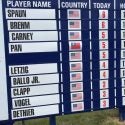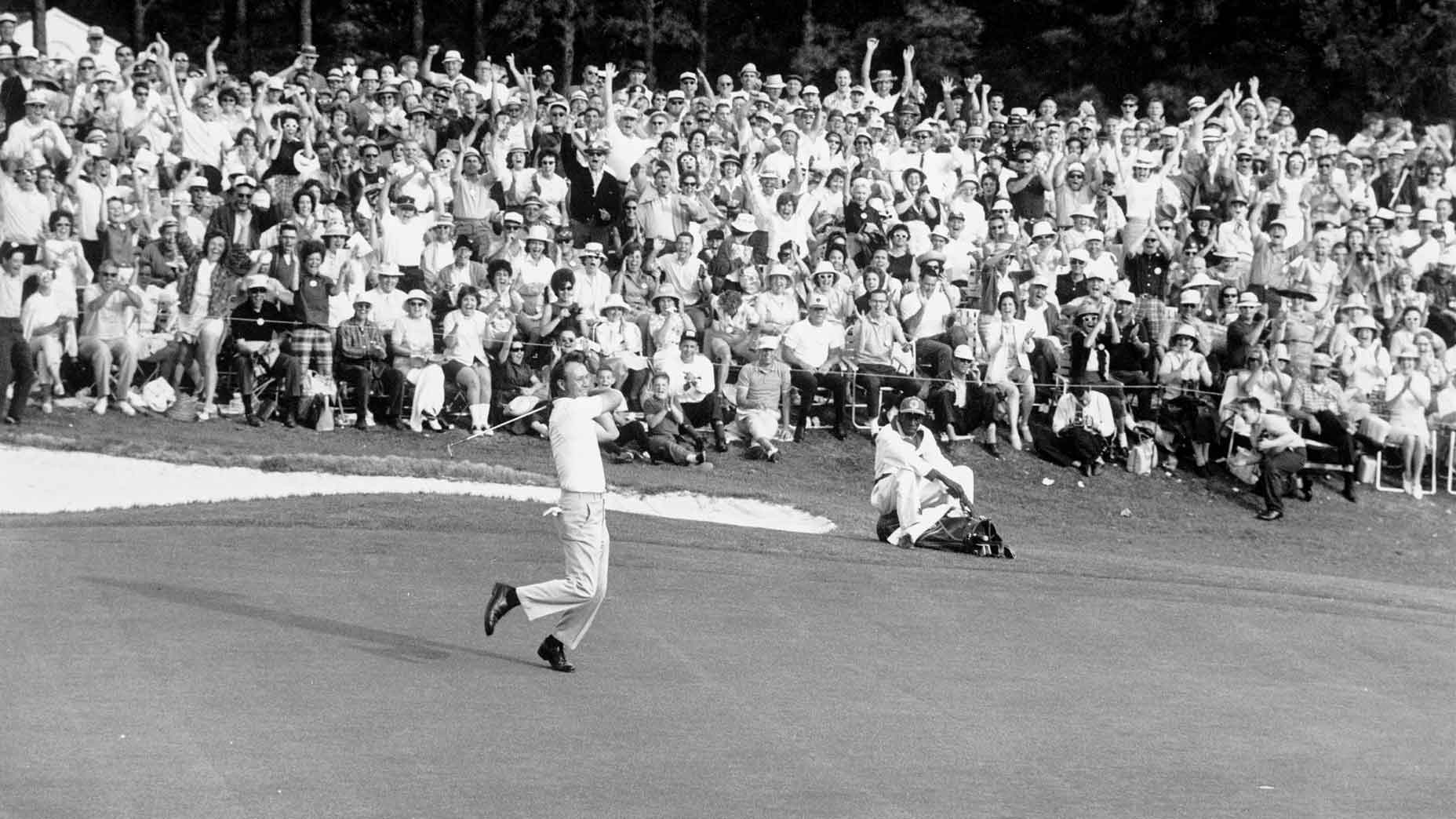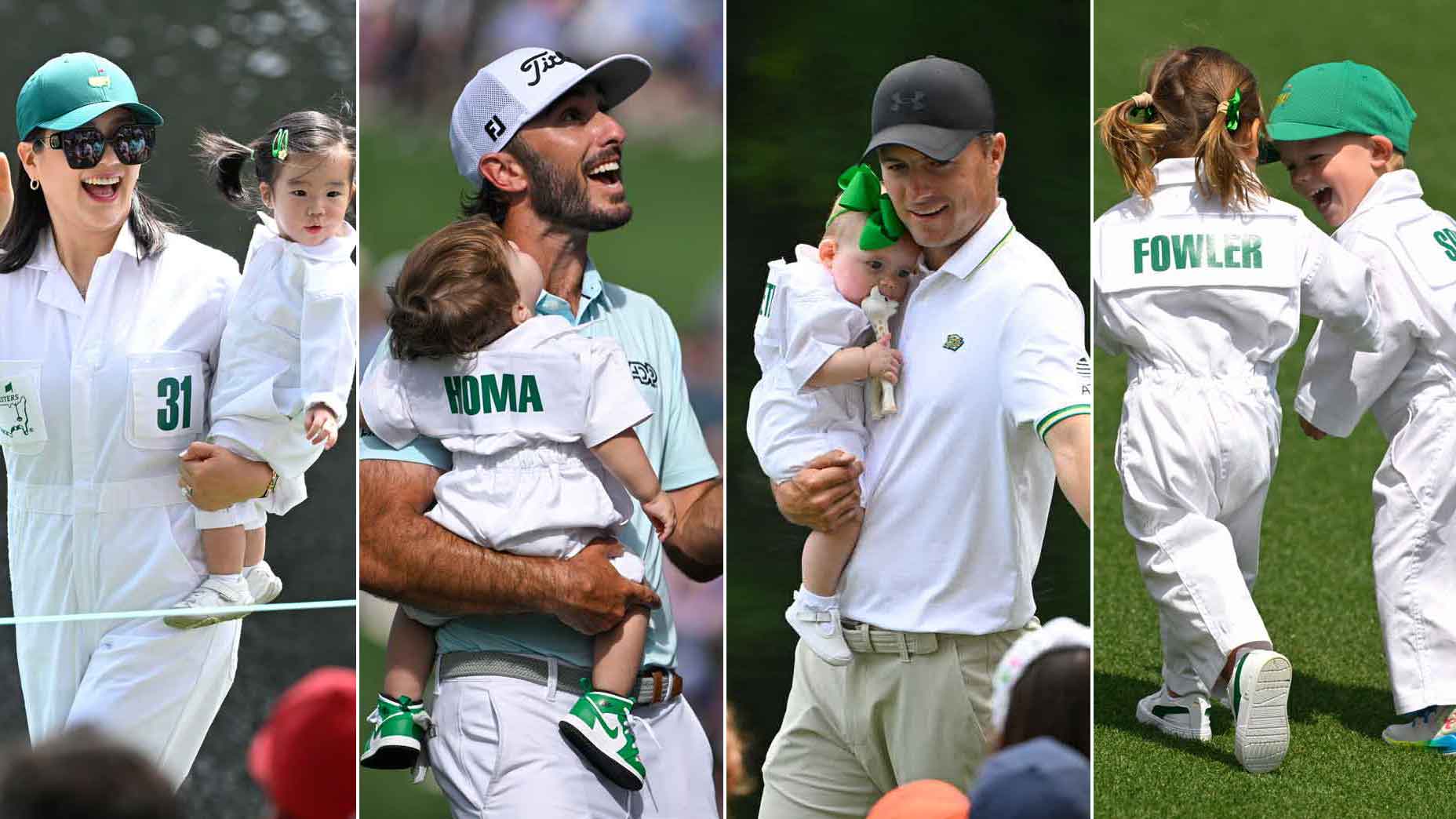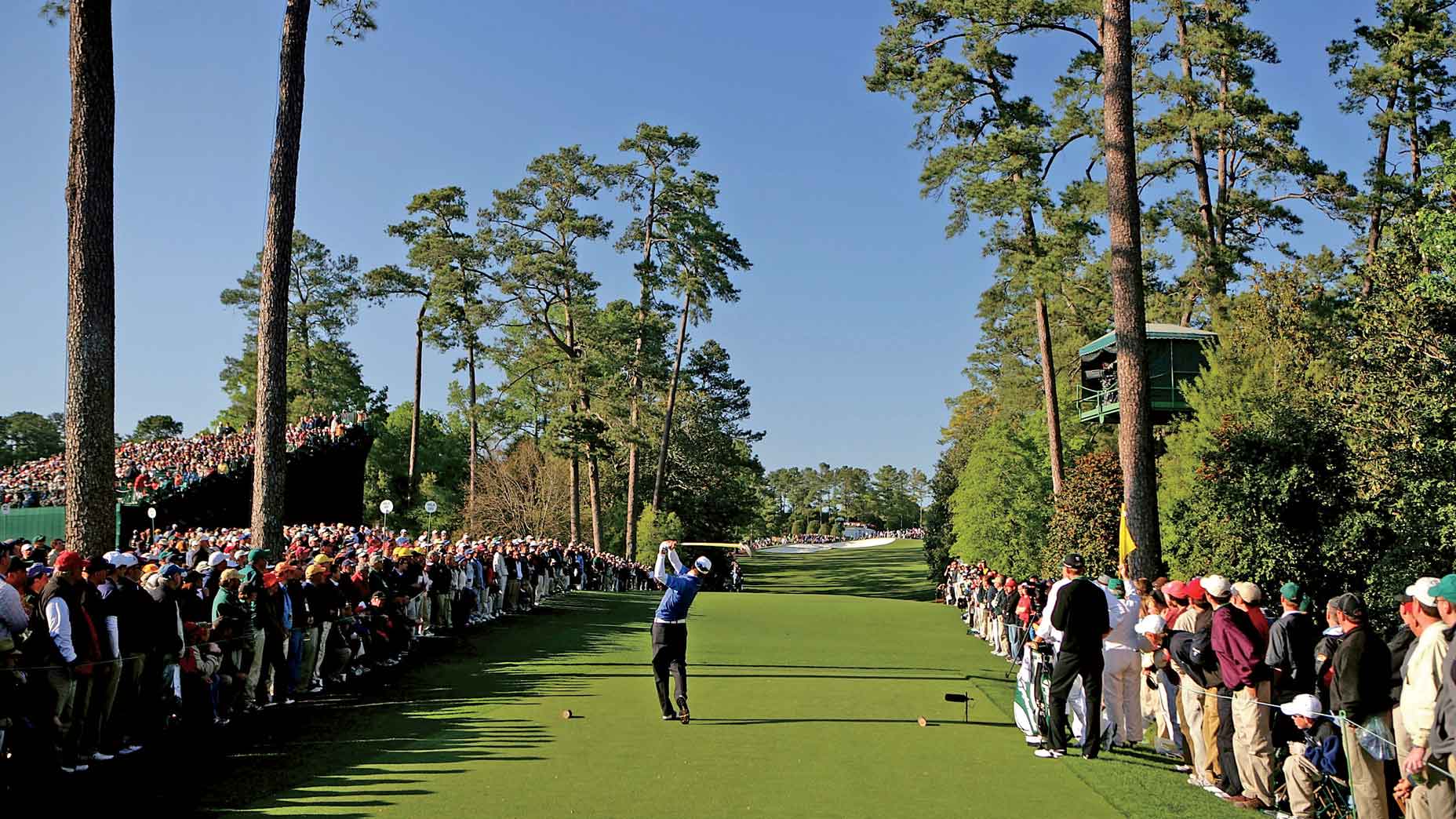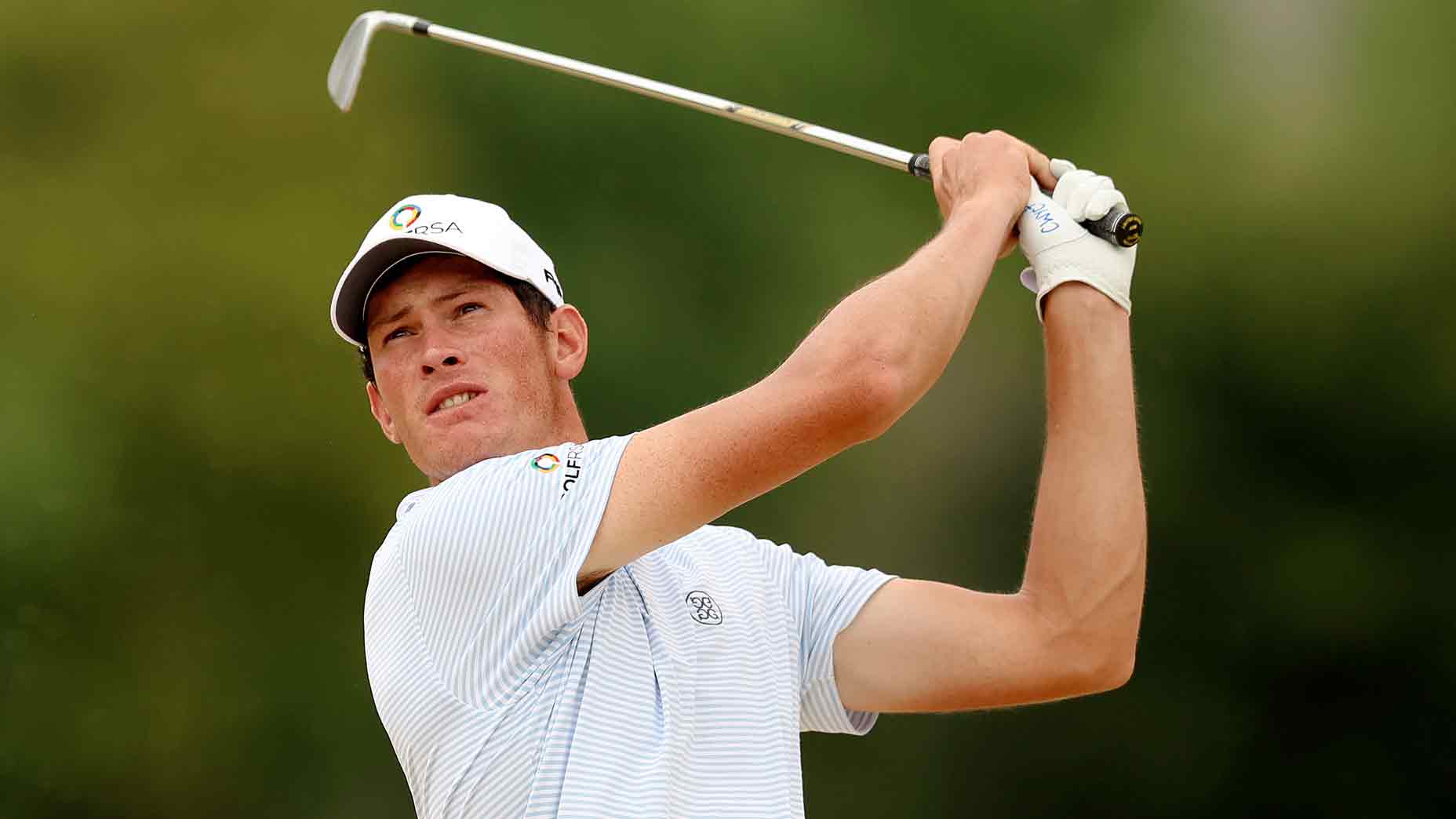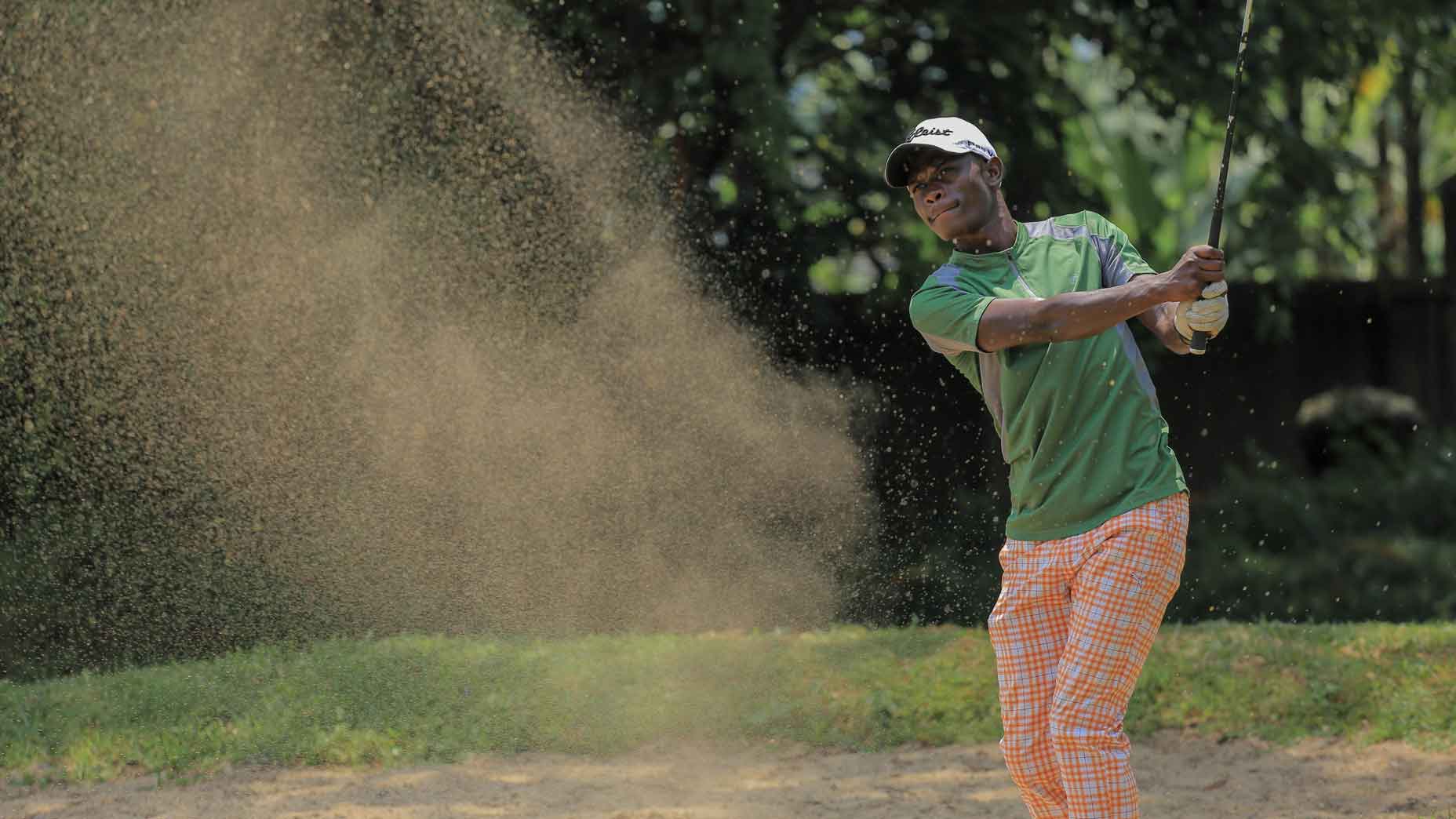 He caddied for $1 a bag. Now, he’s fostering hope through the game
He caddied for $1 a bag. Now, he’s fostering hope through the game
Memoirs of a rookie: What’s playing on the PGA Tour REALLY like?

As I strolled down the fairway last week in the first PGA Tour event of the new year — the Sentry Tournament of Champions — I had some time in between shots to reflect on the question I get most often from my millennial friends: “Dude, how sick is it playing on Tour?”
I get it. The way it’s presented to fans, players are having a blast competing on the game’s biggest stage, basking in the constant bliss of an idyllic lifestyle and cashing in on our childhood dreams-turned-reality. TV coverage and especially social media — the home of pretending — propagate that perception. And in fairness, there definitely are parts of the experience that are awesome.
My instinct is to tell people those parts, the answers they’re expecting to hear, but the honest answer to this question is much more complex than “it’s sick.” It’s a convergence of positive and negative emotions, each fighting to overwhelm the other, and it makes life on Tour both more scary and more ordinary than I ever would have imagined.
To understand what it was truly like for me to tee it up for the first time as a PGA Tour rookie, it’s important to look back to how I got there. There are two general paths to the Tour. The first is for the phenoms who skyrocket straight to the top of the PGA Tour out of college. These are the Spieths, the Fowlers, and the impressive class of youngsters (Wolff, Morikawa, Hovland etc.) who took the summer of 2019 by storm and helped bury any chance I’d had at winning 2018-19 Rookie of the Year (I went on to bury my own chances, too — but we’ll get to that). Kids these days! Anyway, that’s Door No. 1. That was not my path.
Door No. 2, the one I came through, is much more common. It’s the journeyman’s road, with years spent kicking between mini-tours or maybe the Korn Ferry Tour. Some players escape and finally break through to join the big boys. I can say from personal experience that this path is difficult. It’s packed with extensive travel — often by car to save on expenses. Any nutritionist would scoff at players’ steady diets of fast food and one-star hotel continental breakfasts. If a mini-tour player has the good fortune of making it to December 31 with a positive number in his bank account, he should unleash a 2000-Tiger style fist pump, because it means he can keep chasing the distant beacon that is the PGA Tour. I’m well aware that there are worse things in the world than playing for an almost-living. But this journey will exact a mental toll on even the most well-rounded players.
There are thousands of players who exist under that umbrella, of course. Every struggling pro has one thing in common: a deep insecurity about whether or not he’ll make the Tour, and an ever-looming question about whether trying is even worthwhile. I know the taste of insecurity quite well; I got to know it much, much better when I turned pro in 2013. For five years, I had an annual tradition of crying for an hour in my Chevy Cruze rental after failing to advance through Korn Ferry Q-School. Knowing I was relegated to another year on the mini-tours, I questioned everything about my future in the game. Not exactly “living the dream.”
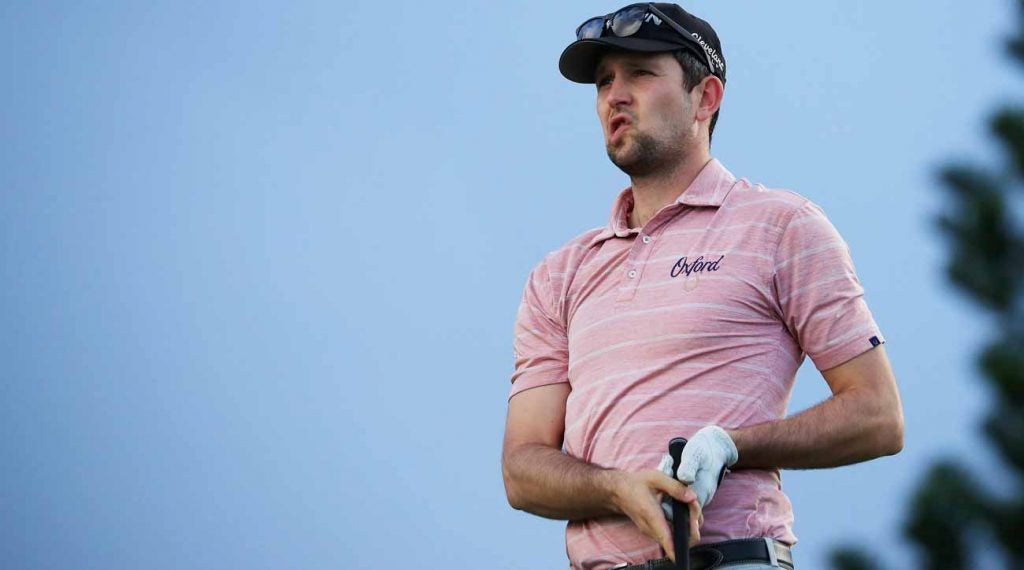
But then, in 2018, something changed. I found a good grove with my swing. I stand close to the ball, so I bent my irons 5 degrees upright, which allowed me to hit iron shots more on line. I switched putters. However, with no status on any tour, I was once again starting from square one. It was going to be a long road — if I ever did make it.
In February of that year, I signed up for the Open Qualifier at the El Bosque Mexico Championship on the Korn Ferry Tour. Not many Americans attend it, for the simple reasons that you need a passport, and the website is in Spanish. Luckily, I had just spent several years playing the PGA Tour Latinoamerica, so I clumsily navigated a series of button-pressing in Spanish until I was in the field. When I shot 66 that Monday, I made it into a 3 for 1 playoff for the last spot. I don’t like rooting against people, but just this once I would like to extend a very, very special thank you to my playing competitors for each making bogeys in the playoff and allowing me into the tournament.
Six days later, I got my first win on the Korn Ferry Tour. A few months later, I won again and secured my PGA Tour card (Fun fact: in the 13 starts between those wins, I finished in the top 50 just once. No, I don’t know why). I went from no status on any tour to being on the PGA Tour 7 months later. Success in this game is hardly linear.
https://www.instagram.com/p/Bgb14hCDaRI/
After paying my dues for all those years, I was finally ready for my stroll in the promised land. The idyllic lifestyle was about to begin, right? And yet, as I found out while standing on hole number 10 of my 1:40 p.m. tee time of first PGA Tour event, the 2018 Safeway Open, I realized that the holy grail of aspiring golfers — a credit-card sized “PGA Tour Member” credential with my mug shot on it — wouldn’t instantly solve my insecurities. The doubts simply take a new form. Remember that these cards are perishable after one year. Rather than questioning whether you can make it to the PGA Tour, Tour rookies immediately begin to wonder if we’re good enough to stay.
In its most basic form, golf involves a clubhead traveling over 100 miles per hour, and if we angle that club’s face one degree in the wrong direction at impact, it can mean making double bogey or worse. A “disaster” like that at the wrong moment can mean a missed cut, and a few disasters together can make or break one’s season. For those on the bubble, capitalizing on important moments can be the biggest difference in your career. Margins for gaining, keeping, and losing one’s card are razor-thin.
So, off I went on my rookie campaign. I was thrilled to be on the PGA Tour after such a difficult path getting there. It was an incredible accomplishment, and one that I was very proud of. But every year, someone finishes one spot outside the top 125, the magic number for staying on the PGA Tour. And Mr. 126 can always find one shot he would have changed to stay inside that 125. It not a healthy way of thinking, but I couldn’t help but think about that fact as the year went on. Every shot matters, quite literally. That’s a stressful way to play.
That’s not to say that the pressure completely drowns out the fun. Playing on the PGA Tour is not the peaceful stroll they portray it as on TV, but it has also been the single most extraordinary experience of my life. The perks are numerous, and the experiences are unforgettable.
Through seven starts, my best finish had been a T60, but the first truly unforgettable moment came for me at my eighth — and favorite — tournament of the year, the AT&T Pebble Beach Pro-Am. I mean it when I say that every tournament on the PGA Tour is incredible, but Pebble Beach is as scenic as it is challenging, and the roster of celebrities that participate made for some surreal conversations at the dining area.
https://www.instagram.com/p/Bt_fCUYleX_/
After a Saturday 66 at Spyglass, I was in the hunt, and paired with Jordan Spieth and his amateur playing partner Jake Owen in the final round on Sunday. For most players outside the top 50 in the world, playing on the PGA Tour does not mean automatically punching a ticket to all the biggest events. Rookies like myself don’t play WGCs, Invitationals, and majors. We play in the last tee times, we start on the back nine, and we don’t often see crowds until the final holes. I’ve now played in 31 PGA Tour events, but Tiger Woods and I have only overlapped three times.
Still, good play can thrust you into the limelight. Standing on the first tee on Sunday at Pebble Beach with Jordan Spieth, cameras shining and galleries packed, I felt like I was finally living the type of experience that people imagined I was having every week. It was exhilarating. I was so nervous that I was certain I would top my first tee shot. Somehow I didn’t; I even held on to finish T28.
Those types of experiences are priceless. The biggest thrill of the year came two weeks after Pebble Beach, at the Puerto Rico Open. I won! I won a tournament on the PGA Tour. Even in writing that sentence, that seems impossible to me. Perhaps the young superstars, trained from a young age to believe that winning on the PGA Tour is their destiny, are not surprised by their first win. But I’m just some guy with a good golf game who thought there was an outside chance I could make the Tour.
In 3rd place after a Saturday 69, I knew that winning was a possibility. To be honest, I was just happy that I was in contention. It was the first time I was in the top 10 heading into Sunday, and after struggling to compete the first part of the year, I took this as definitive proof that I could compete with the best players. That fact alone brought me huge relief.
The final round was a grueling four-hour exam of every skill I had grown up practicing. It’s not easy to win at any level, never mind the Tour. The pressure continued to build, wearing at me bit by bit, a culmination of years of preparation boiled down to one opportunity to change my life. That round was an emotional rollercoaster ride with no seat belt, each contender knowing there’d only be one man left standing at the end.
When I’m playing my best, it’s because I’m driving it straight and making long putts. And with my length, par 5s are my forte. I did exactly that to begin the round, and birdied 3 of my first 5 holes — two of them par 5s. I was atop a PGA Tour leaderboard on Sunday for the first time in my life.
Unfortunately for me and my rapidly-greying hairs, that wasn’t “it.” I bogeyed the next two holes, and found myself back in 5th place. The dream of winning seemed out of reach.
But I found that recipe again. I made two long birdie putts, birdied another par 5, and soon found myself walking up to the green on the 72nd hole of the Puerto Rico Open with a two-shot lead.
What does it feel like to be moments away from winning on the PGA Tour? The bubble of fear and stress, which I’d pushed aside all day out of necessity, suddenly burst. I genuinely couldn’t believe it. Before I’d even finished off the win, I could feel something like elation washing over me. But the even stronger feeling was relief, followed by a heavy dose of gratitude. Sunscreen-laced tears of joy (now diluted to SPF 15) ran down my cheeks. It was all I could do to hit the final putt. I’ll remember it forever.
What a day, what a week! A putt here I'll never forget. Thanks for all the support this week! pic.twitter.com/NuOmu6IUUx@PuertoRicoOpen @PGATOUR
— Martin Trainer (@MartinDTrainer) February 24, 2019
ADVERTISEMENT
So, to get back to that original question, “How sick is it playing on the PGA Tour?” It’s not the fairy tale it’s sometimes made out to be. Hotel to gym to golf course to hotel is my daily schedule for 26 weeks out of the year, and it can undeniably feel like a job. It’s hard work. It’s no secret that on the course, my results since that win haven’t measured up to my expectations (I’ve made four cuts since then), and trying to fix your swing while you’re on Tour every week is no small feat. The work continues.
But the highs of playing on the PGA Tour are a rush. I’ve made unforgettable memories. And more than anything, the challenge of trying to stay out here is a gift. It gives me motivation to practice. It gives me purpose. And for that I’m extremely fortunate.
Now, for some of my favorite moments from the year:
Loudest cheer
At the Players Championship last year, I sat one stroke inside the cut line in round 2 on the par-3 17th, the infamous island green that promises delicious drama for the tens of thousands of fans and unbearable dread for players. I nervously flared my wedge barely onto dry land (phew). It went into the teeny pot bunker, so I splashed the most nerve-racking sand shot of my life past the hole to the back edge of the green, just inches from the water (phew again). 10 feet away for par, I hit my putt in the center of the hole, and the crowd went wild. Pretty cool.
Funniest moment
Cameron Champ is the greatest driver of the ball I’ve ever seen. He hits it absurdly long, and very straight. He’ll undoubtedly have a great career, and perhaps be a Hall of Famer by the end. Nothing short of an injury could derail him. He was almost derailed.
During a practice round at TPC Summerlin in Las Vegas, I stood on the par-3 17th with Rory Sabbatini in a howling left-to-right wind. I dared him to hit a massive slice with a long iron, starting his ball way left, over the lake to the left of the green, and using the wind bring it back to the putting surface. He did so perfectly, and almost hit the flagstick.
“Alright, now how about with a big stick?” he said, starting to really feel it. Sabo ripped off the headcover on his driver and attempted to chip-slice it in the same manner, starting way left with a big slice. Instead he caught it too pure and I watched in terror as it flew towards the green, still rising, and sailed directly over it. As I held my breath, the ball finally landed directly next to Champ, who was playing the next hole, nearly taking him out on the fly. Sabbatini just laughed.
Favorite advice
Walking down the fairway at the Byron Nelson in Dallas, I asked legend Pat Perez for veteran advice. His response? “F— working out. No one has every gotten injured drinking a beer on the couch.”
Most grouchy behavior by a grouchy veteran
Grouchy veterans are easy to spot. One time, a grouchy veteran walked to a cooler on the side of a tee box, pulled out a water that had just been put in 5 minutes before, stared at it, slumped his shoulders, and grouchily muttered, “It’s warm,” before throwing it back in the cooler.
But what most bewilders me about grouchy veterans is when one hits an extraordinary shot and hears the fans erupt in joy, only to meet their reaction with a blank face and a robotic hand wave. I understand the desire to focus, and the weight of the pressure. But like…Is there a human being in there?
Best (non) celebrity moment
Standing on the 10th tee of a practice round at Bay Hill in March, a man addressed me and said: “Oh my god, I am a HUGE fan. Tell me your name again?” I told him. He responded: “I’ve never heard of you. But I’m a HUGE fan.”
Strangest phenomenon
Being inside the Ropes is weird. I may as well capitalize it: Ropes. They signify the artificial divide on the golf course between player and fan, enhancing a false sense of perceived social class discrepancy. While I’m flattered by the awe and respect that fans give to the players, being on the other side of the Ropes is often strange and uncomfortable. We’re like zoo animals. I once saw a group of men frantically run up to a Roped-off passage just to be within inches of us players. Wordlessly, they stared at us as we walked by. The men were in their 40s.
The Ropes are often so close to the tee that they could reach out and touch us. It’s very common for people to loudly have entire conversations when standing inches away from us, as if the Ropes were a noise-cancelling wall.
Favorite quote
The vast majority of fans are polite and enjoy watching golf at the highest level. That’s the quintessential PGA Tour experience. But during my rookie year I bore witness to the power of celebrity and the way the Ropes can be like a curse for top players. Paired with Auburn alum Jason Dufner, I could see how the never-ending chants for and against his alma mater’s football team would wear on you. They’re generally all the same cheers and jeers. I asked Jason about it, and he shook his head. “I don’t go to their office and yell at them, do I?” Being rich and famous is a worthy tradeoff… I think?
Most difficult players to tell apart in person
Justin Rose/Webb Simpson
Patrick Rogers/Tommy Fleetwood
Rory McIlroy/Matthew Fitzpatrick
Harris English/Hudson Swafford
Nick Watney/Bill Haas
Best Tiger moment
Like everyone from my generation, I idolized Tiger Woods. I was on the putting green Tuesday of the PGA Championship at Bethpage, and here came Tiger, followed by a stampede of cult-like fans screaming his name, begging for just a glance their way. He ignored them and began focusing on his practice: first short putts, then long putts across the green. Intermittently, he joked around with Jason Day. He seemed in a great mood.
One of his long putts scooted by me to another hole, and Tiger began to walk towards me. This was my chance. I imagined myself smoothly looking up, saying hi, making some super witty, memorable remark, and fulfilling the ultimate PGA Tour rite of passage my 12 year old self always imagined.
Scared and starstruck, I avoided eye contact and turned away. I didn’t speak to him. My best Tiger moment was no Tiger moment at all.
Maybe next year!
To receive GOLF’s all-new newsletters, subscribe for free here.
ADVERTISEMENT



